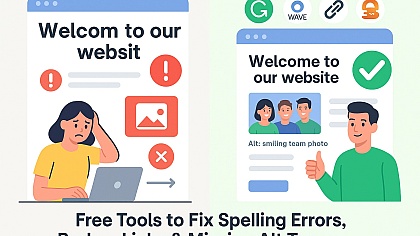
Resume Writing for Career Success in Talent Acquisition
Hiring looks very human from the outside: ambition, timing, chemistry. But in fact, inside most companies, it is also math. Time-to-fill, screen-to-onsite conversion, offer acceptance, first-year retention, etc. Dashboards hum in the background of every requisition, and your résumé either moves those numbers or slows them down.
If you’ve ever been great on paper yet invisible in process, here’s the hook: recruiters don’t read résumés the way candidates write them. It might be impressive news for you, but it’s actually true. How does it work in the harsh reality? Well, candidates tell stories, but recruiters skim for evidence that helps their funnel run faster and cleaner.
A second hook, and it’s practical: you can learn the scorecard and tune your document to it. Some professionals do this alone; however, others pressure-test their draft with an outside eye that understands how hiring is measured, often by collaborating with resume writing professionals for career success in order to translate experience into signals the market recognizes, not just sentences that sound nice. Either way, the goal is identical here: you must do your best to compress value into a format that improves the team’s odds of a quick, confident yes.
Why This Matters Right Now
We all can see that labor markets always move in cycles, but actually, the internal metrics don’t retire during a downturn or a boom; if anything, leadership demands better signals. Obviously, the résumé remains the canonical artefact that travels inside the company from recruiter to hiring manager to panel. The bitter truth that many people struggle to accept is that you can have a sharp portfolio and a strong network, but if the PDF that enters the room doesn’t speak the language of the dashboard, it adds friction you’ll never see, unfortunately.
What the Dashboard Actually Measures
If you do some research, you’ll find out that most talent teams align on a familiar cluster of numbers. The potential lying here is pretty clear: knowing them clarifies what your résumé should emphasise.
• Time-to-fill: days from requisition to accepted offer.
• Funnel conversion: source-to-screen, screen-to-onsite, onsite-to-offer.
• Offer acceptance: the close rate post-offer.
• Quality-of-hire: ramp speed, early performance, first-year retention.
• Candidate experience: speed, clarity, fairness, and consistency.
Of course, your document cannot control each metric; it’s simply impossible. But it can exert pressure on all of them, primarily by making relevance and results legible in seconds.
How Recruiters Actually Read
In this section, we are going to reveal the secrets about what’s going on in the recruiting world. So, the first pass is a risk scan.
● Can you do the work?
● Have you done something similar at a similar scale?
● Is there evidence, ideally numerical, that your impact extended beyond activity to outcome?
And what happens next? Well, the second pass is a pattern scan.
● Do your decisions look intentional?
● Does the scope rise?
● Do the numbers improve?
A résumé that speeds these scans wins time, and in hiring, time is a currency.
Translate Experience into Metrics or The RIM Method
Role. Impact. Metric. One bullet, three beats.
Role tells what you owned and at what scope. Impact tells what changed because of your work. Metric proves it with a number.
● Weak: “Owned full-cycle recruiting for sales.”
● Strong: “Owned full-cycle recruiting for 38 quota roles; cut time-to-fill by 22% and raised offer acceptance from 71% to 82%.”
A Small Upgrade with Big Payoff or Using STAR to Score
STAR (Situation, Task, Action, Result) is great for interviews. On the résumé, compress it. Keep one clause of context if it prevents confusion, then drive quickly to Action and Result, and, when possible, tie the result to a metric the business already uses.
Example: “Redesigned onboarding for engineering; ramp time down 2.5 weeks; 90-day retention up seven points.”
Structure That Speeds Screening
Any recruiter would confirm that a clean layout doesn’t have a cosmetic function. It is a performance feature, not less.
• Header: name, city, email, mobile, LinkedIn with custom URL.
• Executive summary (three to four lines): target role, domain focus, two strengths tied to an outcome, plus core systems.
• Skills block (ten to fourteen terms): grouped by theme (Talent Strategy, Recruiting Ops, Analytics, Systems).
• Experience: Role–Impact–Metric bullets; two to five per role.
• Education and credentials: degrees, relevant certifications, notable courses.
One page is biased until you earn the second, usually at a broader scope (multi-region, multi-function), where each section delivers non-overlapping impact. White space is a courtesy to the reader and an advantage to you.
Write for the Funnel, Not Just the Reader
Source & Screen
Signal market literacy with specifics: talent CRM, alumni communities, search strings, referral loops, events, and content that consistently converts. Make volume tangible without sounding inflated.
Example bullets:
• “Reactivated 600 dormant design candidates via CRM sequences; 14 hires; source-to-screen conversion 23%.”
• “Built referral sprint with sales leadership; 32 submissions in two weeks; three hires.”
Interview & Selection
Rigor scales better than charisma. Mention structured interviews, scoring rubrics, calibration practices, and interviewer training and show the consequences.
• “Introduced structured rubric for product interviews; onsite pass-through rose from 27% to 35% without lowering the bar.”
• “Trained 42 interviewers; variance in scores narrowed; candidate satisfaction improved by 0.4 on a five-point scale.”
Offer & Close
The last mile has the highest leverage and the highest risk.
• “Instituted pre-close checklist; offer acceptance increased to 83% over two quarters.”
• “Partnered with compensation to align ranges to market; reduced reneges to one in twelve months.”
Onboarding & Early Retention
Close the loop to a metric executives track.
• “Co-authored 30-60-90 plans with hiring managers; one-year retention for engineering cohort reached 92%.”
• “Flagged early-attrition signatures to HRBP; exit reasons tied to role clarity declined.”
Finding Numbers When You Don’t Own a Dashboard
Not every function gives you easy, precise data. You still have options.
• Ranges: “reduced 10–15%” when seasonality or measurement cadence prevents an exact figure.
• Proxies: “filled 30+ requisitions per quarter across GTM and G&A.”
• Benchmarks: “exceeded 30-day SLA for eight consecutive quarters.”
• Before/After: “offer cycle time from 10 days to 6.”
• Ratios: “onsite-to-offer improved from 1:5 to 1:3.”
ATS Reality, Without the Superstition
Use standard headings. Avoid tables and multi-column text boxes that scramble parsing. Spell out a term once, like Applicant Tracking System (ATS), then use the acronym. Place keywords where they belong: in context, attached to outcomes. “Greenhouse ATS admin; rebuilt stages and SLAs; time-to-first interview reduced by two days.” That line satisfies the machine and the human.
Cross-Functional Candidates and Career Transitions
If you are shifting lanes (sales, operations, HRBP into TA) make transferability explicit. Stakeholder management, pipeline discipline, forecasting, and process design are portable. Pull forward places you designed an interview loop, ran hiring for your team, built a referral program, or wrote an onboarding draft. Then quantify. Early-career candidates can lead with project outcomes, internships, and leadership in clubs or volunteer organizations, measured wherever possible.
A Five-Day Build That Respects Your Week
Day 1: Calibrate to a Posting
Read three target descriptions. Extract eight to twelve role-critical terms. Rank the outcomes emphasized: less time-to-fill, stronger outbound, better acceptance. Pick two signature achievements that map directly. If they don’t sit in your top half page, restructure until they do.
Day 2: Convert Responsibilities to RIM Bullets
Take your last two jobs. For each, write four Role–Impact–Metric bullets. Add one before-and-after comparison to your anchor bullet in each role. Note scale (regions, headcount, bands, functions) because scope is often the hidden hiring criterion.
Day 3: Design for Skimmability
Compress bullets to one or two lines. Start with a verb. Keep tenses parallel: past for past roles, present for current. Align dates cleanly. Lose the flourish that looks good on a poster and dies in a parser.
Day 4: Sanity-Check Against the Dashboard
Can a reviewer find three numbers in the first half page? Do at least two map to time, conversion, acceptance, or retention? Does your summary assert a result rather than merely a title? If not, revise.
Day 5: Finish the Last Mile
Give the file a sober name: Firstname_Lastname_TA_Leader.pdf (or Analyst, Coordinator, Sourcer). Sync your vocabulary with your LinkedIn so search finds you. Prepare a 60-second story for the recruiter: one process win, one business win, both quantified, both yours.
Common Errors That Suppress Your Signal
• Responsibility without impact: “Owned full-cycle recruiting” tells us nothing by itself.
• Soft-skill piles: “great communicator, team player” reads like filler; prove it in outcomes.
• Jargon shots: impressive in the short term, dated in a year; prefer verbs of effect.
• Over-precision: numbers with decimal theatrics invite scepticism.
• Keyword stuffing: hurts readability and triggers doubt in the interview.
When a Micro Case Beats Another Bullet
If a role centred on a transformation (building recruiting ops, standing up university hiring, replacing an agency dependency), include a three-line “micro case” under that role.
Objective: “Stand up campus pipeline for data and product.”
Actions: “Built assessment, trained 22 interviewers, scheduled two events.”
Results: “Closed 18 hires; one-year retention 94%; agency spend avoided.”
Language That Ages Well
Pick verbs that will still mean something next year: built, reduced, standardized, scaled, and accelerated. Favour plain business English.
Ethics and Credit
If a result belongs to a team, say so and quantify your contribution. When addressing diversity outcomes, frame your part in process quality (structured interviews, diverse slates, and interviewer training) rather than claiming demographic change. Integrity travels. It will meet you again during reference checks.
A Quick Top-Third Template You Can Personalize
• Headline with target role and domain.
• Three-line summary tying strengths to a signature metric.
• Skills grouped by theme (Strategy, Ops, Analytics, Systems).
• First experience entry with two RIM bullets that hit time and conversion.
The Final Checklist Before You Hit Send
• Relevance: headline matches the posted title or function.
• Evidence: every role shows at least two numbers.
• Funnel fit: time, conversion, acceptance, or retention appears on page one.
• Parsing: standard headings, simple structure, no images or columns.
• Polish: spellings, dates, file name, and LinkedIn alignment.
Write for the Decision, Not the Drama
Markets wobble, budgets pause, and priorities shift mid-search. The scoreboard inside the company, however, keeps its job. That is good news. When your résumé is built for how decisions happen (fast, comparative, anchored in metrics) you reduce friction for the team and for yourself. The work is unglamorous:
● replace three vague lines with Role–Impact–Metric bullets;
● add a before-and-after that ties to time or conversion;
● make the opening say what you do and what changed because you did it.
None of that guarantees an offer. It does something more durable: it makes you eligible to the process that must say yes. It does so in the only language that process cannot ignore, the quiet math behind every career move.














